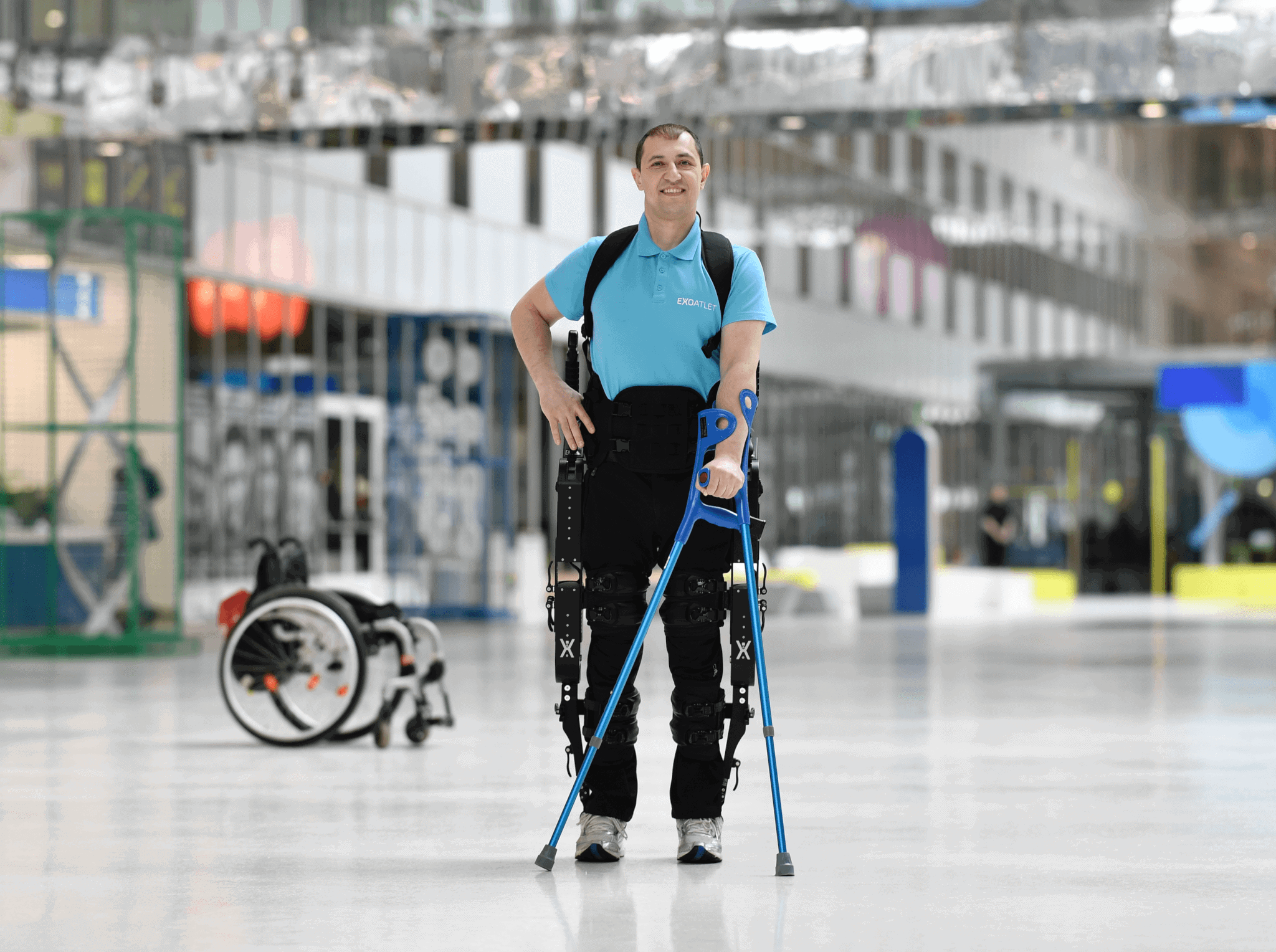ExoAtlet is a Luxembourg-based tech company that develops and produces a range of medical robotic technologies, including bionic exoskeletons. These innovative medical devices are designed to help patients with locomotive impairments to walk again. Here is a list of interesting things about this novel technology.
Credits © ExoAtlet
1 – Training with an exoskeleton is one of the most effective ways for patients with locomotor disorders to restore their walking abilities
When walking with an exoskeleton, patients with locomotor disorders are able to move in a way that is very similar to a natural gait. This sends powerful stimuli to the brain and eventually, thanks to the plasticity effect, leads to the restoration of the patients’ lost ability to walk.
2 – Training with an exoskeleton has huge positive impacts on the patient’s mental health
Most patients report positive impacts on their mental health and quality of life after only a few exoskeleton training sessions. By being in a vertical position, as opposed to sitting in a wheelchair, the patients benefits from increased lung volume and improved blood circulation in the entire body which leads to a better overall health condition. Feeling better physically and learning to walk again boosts their confidence and leads to a significant reduction in depression and other mental health disorders.
3 – ExoAtlet-powered exoskeletons are customised to match the specific needs of each patient
Exoskeletons have drives located in the hip and knee joints. When these drives power up, they move the user’s legs in a way that is similar to a natural gate. The speed and power level can either be initiated by the patient or determined by a pre-designed program that is developed with the medical staff to match the unique conditions of each patient. Aside from the software, the hardware can also be tailored to each patient by adjusting the size and design of the exoskeleton.
“Thanks to the ExoAtlet exoskeleton and a bodyweight support system I was able to feel this wonderful sensation of walking again after being in a wheelchair for years.”
– Evgeni K., ExoAtlet’s pilot
4 – Advanced exoskeleton models can be controlled purely by the patient’s thoughts
Patients can control the level of support they receive from the exoskeleton through various types of control systems. These include tablets, buttons on the control handles or smart crutches. The most advanced solutions allow the patients to actuate the exoskeleton purely through their thoughts. This type of control promotes an even better neural plasticity and therefore speeds up recovery. ExoAtlet is currently collaborating with leading neuroscientists to optimise this brain-controlled solution.
5 – Exoskeletons are made from the same materials than airplanes
Aluminium and steel alloys are often the preferred materials for exoskeletons. These materials can be relatively heavy and rigid but most patients using exoskeletons are not able to stay vertically on their own. Therefore, the exoskeleton needs to be made from material that is sturdy enough to provide full support.
6 – Exoskeletons are not exclusively for lower limbs
So far, ExoAtlet has been focusing its research and development on lower limb exoskeletons but different designs exist: exoskeletons can cover the entire body, upper extremities, or even a specific body segment such as the ankle or the hip.
7 – Exoskeletons are not just used for medical purposes; they also have applications in the military
Broadly speaking, there are two types of exoskeletons. Medical exoskeletons (those developed by ExoAtlet) are designed to help the user restore and compensate for lost abilities. The second type of exoskeleton, used in military or industrial applications, is all about augmenting human performance beyond normal human power.
“Our patients completed three rehabilitation programs and the outcomes are impressive – they improved their walking skills, improved emotional condition. Moreover, there was a tremendous increase in muscle strength in completely paralyzed patients.”
– Elena Shapkova, Ph.D., Leading Researcher at the Laboratory of Clinical Neurophysiology and Neurorehabilitation Technologies, Russia
